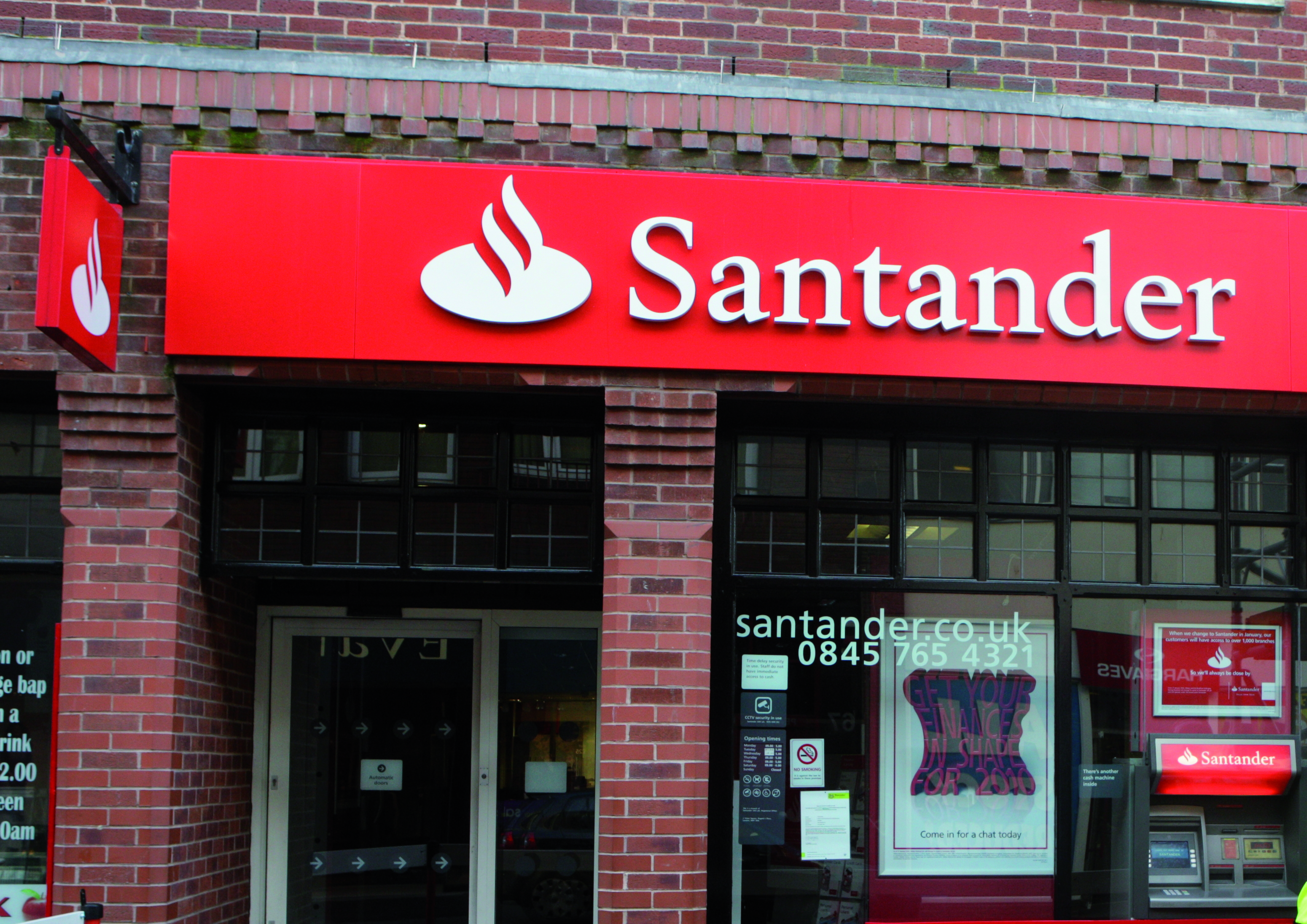With lenders slashing mortgage rates many borrowers are locking into fixed deals to reduce their payments and guard against interest rate rises. Stephen Little talks to experts about what you should consider when remortgaging
With lenders slashing mortgage rates many borrowers are locking into fixed deals to reduce their payments and guard against interest rate rises. Stephen Little talks to experts about what you should consider when remortgaging
It used to be the case that when you bought a house you would take out a mortgage and stay with the same lender until you had paid it off.
However, nowadays lots of people are choosing to swap lenders in order to get a mortgage package that suits them better.
If you decide to remain on the same deal for the full term of the loan you can lose out on a number of potential benefits.
By choosing to remortgage you can reduce monthly repayments, move from a variable rate deal to a fixed rate or even release equity in your property.
Remortgaging involves switching your current mortgage deal either with your existing lender or to a new one.
With the number of competitive deals on the market growing, many borrowers are choosing to remortgage to take advantage of the low rates currently on offer.
According to property services firm LMS, there were 41,157 remortgage loans taken out in July, up 27% from June when there were 32,400 loans.
This is also 36% higher than July last year and the most since January 2009.
The total amount of equity withdrawn rose 27% in July to £5.6 billion, the largest amount since October 2008 and 42% higher than last year.
Andy Knee, chief executive of LMS, said: “Remortgage growth has accelerated this year and this is a trend that is set to continue. We are seeing an increasing number of people in a position where they can remortgage and there is a growing appetite from lenders.
“The rates on offer are quite outstanding and many people are taking advantage of them to help reduce their outgoings.”
[box style=”4″]
Case study: Remortgaging to get a better rate
Neil and Lisa Coston took out their first mortgage in 2001 to buy a house in Norwich.
After paying off their first mortgage they moved out in 2012 to buy a farmhouse in the country.
Both in their 30s, they are dab hands at remortgaging, having done it a number of times since buying their first home.
In 2014 they took out a two-year fixed rate mortgage with Santander at 2.29% which ended in September and they have now moved to a 1.84% fixed rate with Skipton Building Society.
They decided to take out a two-year fixed rate mortgage as they might renovate the property at a later date.
Neil says: “It is an old Georgian farmhouse in need of renovation – we’ve done a lot of work over the last two years.
“We didn’t want to fix into anything for too long as there is always the possibility we might want to borrow more money. By keeping the fixed period short we can remortgage at a later date and build an extension or do further work without having to buy our way out of a mortgage.”
Neil says the EU referendum also played a part in their decision to take out a two-year fixed mortgage.
He says: “It could take more than two years to come out of the EU, so we will have a clearer picture of what leaving might mean in two years’ time. We can then take out a fixed mortgage for a longer period if we want to.”
Neil says they had a meeting with an independent adviser so they could pre-empt the Brexit vote, but decided to do much of the research on their own.
After shopping around for three months they plumped for a deal with Skipton Building Society because of its low mortgage rates and zero administration fees.
He says: “A lot of similar products from different lenders had fees that were £1,000 or over. For a two-year fixed rate mortgage I was really looking for something with no fees and Skipton was the best I could find.”
[/box]
Why remortgage?
One of the biggest reasons people remortgage is to save money, which you can do by moving onto a lower rate.
You can also release equity you have managed to build up in your property or switch from a variable rate to a fixed one if you are looking for greater security.
If you are coming to the end of a fixed rate or tracker deal you might find that the revert rate – the interest rate you pay once your deal ends – is higher, meaning you will have to pay more each month.
It may therefore be worth shopping around to find a better mortgage deal before you get transferred.
Will Gill, senior product manager at Skipton Building Society, said: “Usually, when you come to the end of your fixed mortgage deal you revert onto a lender’s standard variable rate or equivalent.
“By remortgaging with a new lender you can switch to a lower fixed rate and reduce your payments accordingly.”
The Bank of England slashed interest rates in August from 0.50% to 0.25% – the lowest on record and the first cut since 2009 when the financial crisis was at its peak. As the base rate and the mortgage rate are often closely linked many experts believe now is a great time to get a new deal, especially if you are a stuck on a high standard variable rate.
Lenders have been cutting rates and there are now some very competitive deals out there for homeowners looking to remortgage with an interest rate below 2%, with some even offering deals under 1%.
Another reason to remortgage is to reduce the payment term. By finding a cheaper deal and keeping repayments the same you could in fact pay off your mortgage more quickly.
Peter Gettins, product manager at London & Country Mortgages, said: “The vote to leave the EU created uncertainty so more people have taken out a fixed rate mortgage to give themselves stability over the coming years.
“An awful lot of people we talk to are looking to get a fixed rate because interest rates are unlikely to go much lower.
“Even if you look at those lenders passing on the full base rate cut, you could still be looking at 4.5% to 5% on a standard variable rate, so the fact you can get five and two-year fixes below 2% is a no-brainer.”
Knee said it was important for borrowers to take advantage of the low rates currently on offer as there was no guarantee how long they would last.
He said: “If you can fix for five years you are not going to go far wrong as rates are unlikely to go much lower.
“If you take a shorter term deal you might save a little bit of money, but there is a greater risk of rates going up if inflation rises. The associated fees of remortgaging could also wipe out your savings.”
Releasing equity
You can also remortgage if you want to utilise your home’s equity for additional cash by taking out a bigger loan.
If you have lots of credit card debt, releasing money from your home can be cheaper than taking out a loan as mortgages usually have a lower interest rate. However, by spreading out your debts you could be extending the payment term and end up paying more in the long run.
Alternatively, you can also remortgage to make home improvements to boost the value of your property.
Gill said: “People also do it to raise capital, so you can increase your lending within the loan-to-value limits of the new lender you are going to. For home improvements we would allow borrowers to increase their loan-to-value up to 90%.
“People may also wish to raise capital for other uses – such as a holiday, a car, helping out family members with university tuition fees or a deposit for a house. We cap the loan-to-value at 75%.”
Fees and charges
When remortgaging you need to take into account fees and charges as these can reduce any potential savings made.
Some lenders have exit fees and early repayment charges if you want to cancel and take one out with a new lender. If your deal has finished and you have moved onto a standard variable rate you won’t have to pay it, but if you have not you could end up paying as much as 3% depending on the lender.
However, even if you have to pay a fee to get out of your existing deal, with such attractive rates on offer at the moment you may still be able to save money.
Gettins said: “One thing you do have to be really careful of is checking whether there are early repayment charges. Generally that will only apply when you are within a scheme period so during your fixed rate or tracker rate period there will probably be a repayment charge if you want to come out early.
“Depending on the scheme, there could be a charge of up to 5% of the outstanding loan amount, which could run into thousands. The key thing to do, especially if you are coming towards the end of your term, is make sure you don’t switch until you are out of that penalty period.”
Many of the costs of remortgaging with a new lender are similar to when you first take out a mortgage.
While some mortgages are fee-free others may come with a whole host of application charges that make the overall amount you pay more expensive.
When you switch, the new lender will also want a valuation of your property and there will be legal and arrangement fees.
It is also good advice to check the small print to make sure that any mortgage comparison is based on total cost and not just the interest rate.
Just because a new rate looks tempting does not necessarily mean that it will be the most cost effective.
Gettins said: “The new lender will need to have a valuation of the property and there is legal work involved in transferring the mortgage. Most lenders will have schemes with remortgage incentives so you will get free valuation and free legal work. Picking the right deal will involve making sure you cover these costs.
“What a lender will do is assess your affordability, your income, your outgoings and look at bank statements. If you are coming to the end of your current deal, a good time to start shopping around for a new one is about three months before it ends.”
Gill said: “In some cases it is even financially beneficial for a customer to pay early repayment charges because the reduction on the rate they can get moving to a new lender is potentially so great that it offsets the charge from your current lender.”
Using a broker
It is advisable to get help from an independent adviser when choosing a mortgage as there is an awful lot to do and it can help you save money.
If you go directly to a lender it can only give advice regarding its range of products and you might not necessarily get the best one out there.
So it might be better to see a broker who can scour the whole of the mortgage market to find the right deal for you.
As well as getting their unbiased advice, a broker will be able to tell you about a whole host of products available to you and their understanding of affordability criteria and the application process will help take out much of the legwork for you.
Gettins said: “I think it has become more important to get advice as some of the rule changes since the credit crunch have made it much harder for the consumer to assess the market and work out who the right lender is for them. There are thousands of products out there and a broker will be able to narrow them down and help the borrower find the right one.”
[box style=”4″]
How does a remortgage work?
 Andy Knee, chief executive of property services firm LMS, which processes and supports applications on behalf of lenders, brokers and solicitors, explains the remortgage process step-by-step from when you first apply.
Andy Knee, chief executive of property services firm LMS, which processes and supports applications on behalf of lenders, brokers and solicitors, explains the remortgage process step-by-step from when you first apply.
- Instructions received – A welcome pack is sent to the customer setting out details of the transaction, who the case handler is, explanation of the product and next steps. The customer also receives a questionnaire which is completed and signed to provide the lender’s law firm with important information to enable them to proceed with the transaction. For example, this would include details on any additional land, disputes, ground rent arrears, building work in recent years or change of ownership.
- Initial title check – The lender’s law firm reviews the official copies of the register to confirm the property’s address, registered proprietor and charges.
- Questionnaire and ID verification – The law firm checks identity documents from the customer and verifes their identification in accordance with their remortgage instructions and their money laundering requirements. Upon receipt of the completed questionnaire the law firm will write to the existing lender to obtain a redemption statement, which confirms the amount outstanding, any applicable fees and interest due to repay the existing mortgage. They will obtain any further information needed to enable them to satisfy the remortgage instructions and respond to any queries that arise from the information provided by the customer in the questionnaire.
- Mortgage offer – Once they receive the mortgage offer, the law firm will check to make sure the details match the instructions and information provided by the customer. They will find out whether there are any special conditions that need to be satisfied prior to them requesting funds and then send the mortgage deed to the customer to sign, witness and return. The law firm will send any occupier consent forms out if there are adult occupiers at the property other than the borrowers.
- Redemption statement – Once the redemption statement from the existing lender has been received, the law firm will prepare a completion statement for the customer. This will notify the customer if there are any early repayment charges and obtain the customer’s instructions on whether they want to wait for these to expire or proceed to complete the remortgage before then as planned.
- Certificate of Title – Upon receiving the signed mortgage deed and any occupier consent forms the law firm will negotiate a completion date with the customer. The law firm will submit the certificate of title to the new lender confirming that the property is in a good condition and marketable.
- Pre-completion searches – The law firm will carry out a Land Registry priority search to make sure there have been no changes to the register and to give the new lender priority to get their charge registered. The law firm will also carry out a bankruptcy search in the names of the customer. Any entries on either search must be dealt with and verified before completion can take place.
- Completion – On the day of completion the law firm will receive the funds from the new lender, redeem the existing charge and deal with any surplus funds. The law firm will contact the customer to inform them that completion has taken place.
- Post completion – The law firm will date the mortgage deed on the day of completion and request notification of discharge from the existing lender. The law firm will submit their application to register the new charge to the Land Registry in accordance with the timescales set out in the remortgage instructions. Once the new charge has been registered and the existing charge removed the process is complete.
[/box]
Mortgage prisoners
People who have become trapped on their current deal and find themselves unable to remortgage are known as mortgage prisoners.
Since the introduction of the Mortgage Market Review in April 2014 anyone taking out a mortgage is now subject to stricter lending criteria to check that they can afford to repay.
Unfortunately, some borrowers who no longer meet the necessary requirements are unable to get a new mortgage despite their circumstances not changing.
Another reason why people find themselves stuck on an uncompetitive mortgage deal and unable to move is because of negative equity. This is when the value of your property is worth less than the mortgage used to secure it and usually happens when house prices fall.
For example, if you buy a home for £200,000 with a mortgage of £180,000 and your home is now worth £170,000, you would be in negative equity.
Despite soaring house prices across much of the country, negative equity remains a huge problem for many homeowners.
According to online estate agents HouseSimple.com, average property prices in more than half of UK towns and cities are still below those in 2007.
If your house has fallen into negative equity you will find it more difficult to remortgage if you are coming to the end of your deal. If you want to switch lenders it is unlikely your application will be accepted and you will most likely have to move onto a standard variable rate with your current lender, which could mean your payments go up.
Gettins said: “Borrowers with loans currently higher than their property value will be effectively stuck where they are.
“Some lenders may be able to offer them an alternative product, but whether that is going to be any gain over a standard variable rate is open to question. The only thing those borrowers can do is run the mortgage down as quickly as they can by overpaying if possible, because in the current environment if you are in negative equity you are not going to be able to remortgage.”















